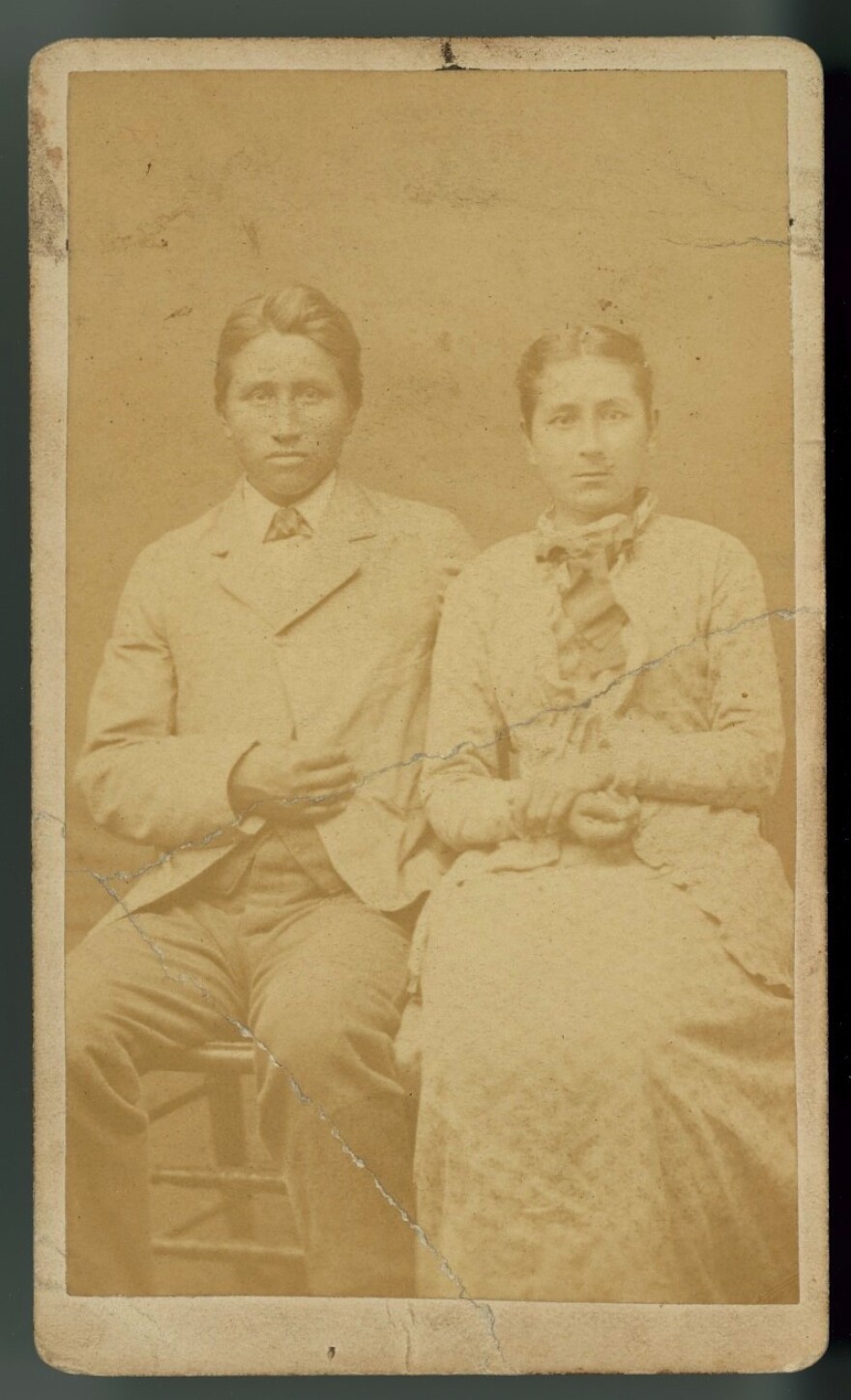Even white folks out east called her “Bright Eyes,” in part because it was her Omaha name, and in part because she had, well, “bright eyes.” Susette La Flesche was a joy to look at, a beautiful Native woman people said, and, you know, from way out there in the wilds too.
One night in 1879, Henry Wadsworth Longfellow, perhaps the greatest American poet of the era, waited for her, the guest of honor to appear at a party in her honor at the lavish home of yet another of America's big wigs. It was a big deal, a big, big deal. When she showed, Longfellow, a little man with a huge broom beard, went speechless. He reached for the woman's hands and took them greedily, then went silent in shock and awe. "This is Minnehaha," he said with the heraldic fervor. Today, 142 years later, Longfellow's exuberance requires some context. A quarter century before, he had published the Song of Hiawatha, a epic poem, book-length, written in trochaic tetrameter--
On the shores of Gitche Gumee, Of the shining Big-Sea-Water, Stood Nokomis, the old woman, Pointing with her finger westward,. . . a wild-eyed, galloping rhythm only an English teacher could love. Hiawatha, maybe the original "noble savage,” falls madly in love with an Indian princess named Minnehaha, but their love is star-crossed, like Romeo and Juliet's. The princess dies, but then--thank goodness--their love is eternal. Hiawatha loves Minnehaha" was hot stuff in 1879. Try not to giggle. The whole nation heard the great poet say what he did that night at the door. She was an Omaha, born in Nebraska. She wasn't dressed in buckskin that night and wore no beaded breastplate. Ms. La Flesche was dressed like any other New Englander, and while the old poet might have wanted to see his Minnehaha in Susette's eyes, she was absolutely nothing of the sort. Bright Eyes was the oldest child of Joseph Iron Eye La Flesche, the last recognized chief of the Omahas. She'd received her primary education at the Presbyterian boarding school on the Omaha reservation. But when she wanted more schooling, she had been sent out east to a finishing school for women in Elizabeth, New Jersey. The night of the party she was no stranger to Euro-American culture. During Standing Bear's trial in Nebraska, Susette La Flesche had been the translator for the Ponca chief. The two of them were, in fact, distant relatives.
Eventually, she married Thomas Tibbles, the newspaper reporter who'd brought the Ponca's sad story to light. Together, the two of them had appeared before Congress to testify on the plight of Native people across the land. Together, they continued to testify throughout their lives. In 1891, she and her husband went to the Pine Ridge reservation in South Dakota to investigate the origins of the Wounded Knee Massacre. For some time, she lived in Washington D. C., where her husband was a news correspondent. She compiled, in her lifetime of some 47 years, her own extensive list of essays and reports on Native America, for whom she was an undying advocate. She was known, far and wide, by her Omaha name, Inshata Theumba, translated as "Bright Eyes." Like her younger sister Susanne, Susette had every opportunity to leave the reservation. She and her husband could have lived a glittery life out east. She could have established a home almost anywhere in America and attended endless exclusive dinners. Instead, like her sister, she never lost her commitments. Throughout her life she advocated for all of America's First Nations. Thomas Tibbles and Bright Eyes moved here to Bancroft in 1902 to live among her people and died there on May 26, 1903. In truth, she was nothing of Minnehaha. But the Longfellow was right in one way: Susette La Fleshe was royalty in every possible way.






